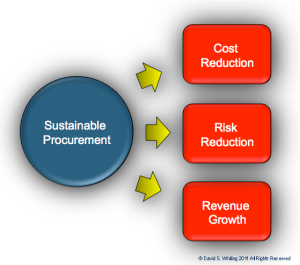If marketers are going to make significant and successful contributions to the development of more sustainable brand strategies, products and services, they are going have to get to grips with supply chains. To marketers supply chains don’t appear to represent the same level of excitement as working with an advertising agency on a new creative vehicle, devising a social media strategy, creating a new packaging design or engaging with consumers.
Yet, whilst the world of marketing concentrates more and more on the Promotional ‘P’ at the expense of the other three Ps, the Product ‘P’ (including service) is becoming ever more important. Conceptually, it probably always was. In many industries, however, marketing has never managed to develop its area of responsibility beyond that of marketing communications (and sometimes market research).
Think of the financial services industry – market research must continuously tell banks and other financial service providers what a terrible job they’re doing, yet the marketers responsible for developing promotional campaigns have no influence over what actually matters to the customer – the service. Similarly, much of the worlds of business-to-business and the public sector have managed to keep a proper implementation of marketing away from their doors. Only in industries such as consumers goods and retailing is there a much greater prevalence of a marketing orientation impacting on the development of product/service, pricing and distribution strategies.
Reaching back to marketing theory, you might remember the old sales and production orientations that the advent of marketing was supposed to supersede. Some companies in industries where these ways of thinking still hold sway are beginning to try to become more sustainable, but their attempts will be frustrated by a lack of market orientation. Compliance, risk management and the development of sustainable initiatives are all possible, but realisation of any subsequent competitive advantage in the marketplace will be much more difficult.
Even in more marketing-oriented organizations, product, service and supply chain considerations may be handled largely by other functions such as operations, supply chain management and procurement, without any marketing involvement. As a young brand manager I used to visit the factories and learn a little about product ingredients and production processes, but had no idea from where raw materials were sourced or the working conditions of those who produced them.
According to the Carbon Disclosure Project more than 50% of an average company’s GHG (greenhouse gas) emissions are in the external supply chain. Coca-Cola found that its own supply chain used 5 litres of water per gallon of Coke produced, but its sugar suppliers used 200 litres per litre of product produced, so this became the focus of efforts to reduce water consumption. Companies such as Walmart, IKEA, Ford and Procter & Gamble have introduced sustainability scorecards for their suppliers: procurement criteria are no longer just about cost, value and speed.
The language of supply chains and product life cycles, and measurement and control systems such as ISO 14040 and PAS 2050, are becoming a more important area of expertise for marketers as a part of acquiring a much more holistic view of the business. Brand reputations are becoming indivisible from far-flung suppliers as consumers increasingly want to ‘look behind the curtain’.
Marketing needs to work with other functions and advisors to measure and understand such issues as carbon and water footprints. From early this century, Unilever began using its Brand Imprint tools, combining life cycle analysis with marketing processes to understand the social, environmental and economic impacts of its brands. This resulted, for instance, in all tea being sourced from Rainforest Alliance certified sources and changes in detergent product and pack specifications to reduce greenhouse gas emissions. Subsequently this became an important component of the Sustainable Living Plan initiative.
This kind of approach helps encourage partnerships, both internally and externally to the organization, which in turn will stimulate innovation and open up new opportunities to strengthen brand values. Opportunities may arise at the usage and disposal stages of the life cycle, as well as the sourcing end. For instance, Procter & Gamble’s highly successful ‘Turn to 30’ campaign for Ariel and Patagonia’s ‘Common Threads’ initiative are both successful steps in educating and involving consumers, which required appropriate process and market insights.
 In addition to the reduced sustainability impacts, the benefits to the company in understanding its supply chain are immediately obvious in terms of potential cost reductions, which are often significant, and for reducing the risk of fines, bad publicity, customer boycotts and the negative impact on brand equity and shareholder value. But longer term benefits, highly relevant to marketing, include the opportunity to innovate, produce improved products, win new business (e.g. public sector contracts), achieve competitive advantage and enhance brand equity.
In addition to the reduced sustainability impacts, the benefits to the company in understanding its supply chain are immediately obvious in terms of potential cost reductions, which are often significant, and for reducing the risk of fines, bad publicity, customer boycotts and the negative impact on brand equity and shareholder value. But longer term benefits, highly relevant to marketing, include the opportunity to innovate, produce improved products, win new business (e.g. public sector contracts), achieve competitive advantage and enhance brand equity.
If marketers don’t want to risk being left behind in a communications ghetto, providing the icing on the cake that has been baked by others, immersion in supply chains is a good place to start. Ken Wood, the former CEO of Muller and Weetabix, and Martin Glenn, CEO of the Football Association – both former marketers – have stated that marketers need to play a much greater role in the control of the supply chain for their brands.
